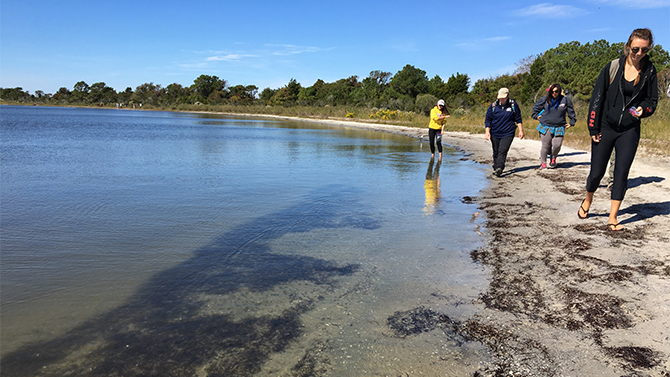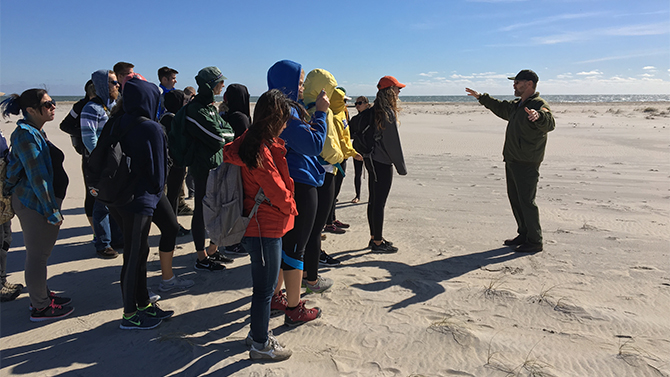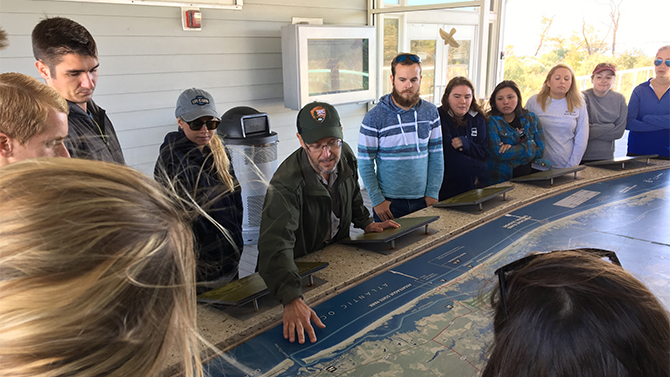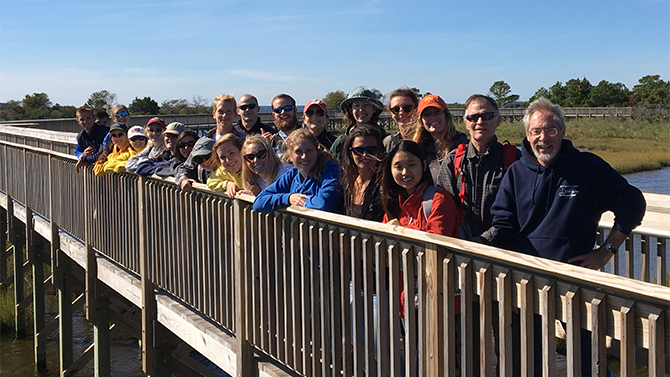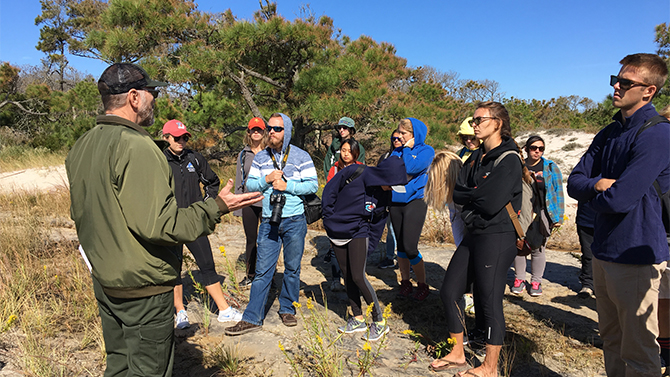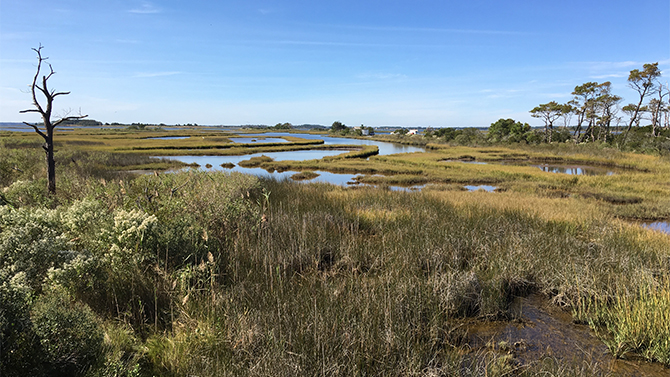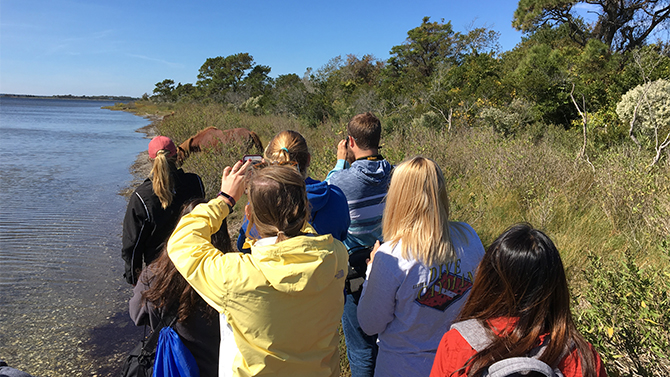

Outdoor classroom
Photos courtesy of Doug Miller November 18, 2016
Fieldwork at Assateague Island broadens students' view of the natural environment
Assateague Island National Seashore is known for its beautiful vistas and wild horses, but it also is home a wide range of flora and fauna.
This fall, 23 University of Delaware students taking MAST421/461 coastal field biology spent a day in this outdoor classroom to learn about habitat by exploring and sampling the local area’s plant and animal life in the natural environment.
Accompanied by UD professors Doug Miller and Patrick Gaffney, the students toured the life of the dune trail, viewed horses and walked over the remains of a roadway originally built to facilitate development of the island as South Ocean City.
Miller lectured by the shoreline on lagoons and sea grass beds, environmental features not readily available near UD’s Hugh R. Sharp Campus in Lewes, where the course is based. A marsh walk along an elevated boardwalk provided a unique vantage point into the flooded marsh and life of the maritime forest as well.
“Even if places look wild and natural now, few are,” said Miller, an associate professor in the School of Marine Science and Policy. “There’s always a history to any plot of land and sometimes that history is important to understanding what is there now.”
For example, the remains of the road the students walked over was originally intended to connect the north side of Assateague Island with Ocean City, Maryland. The storm of ’62, a significant nor’easter, caused substantial damage that led to Assateague Island’s preservation as a national seashore.
Students compare different habitats
The trip challenged the students to look at the environment, apply what they’ve learned in class and draw comparisons between the flora and fauna in Assateague and Lewes, Delaware, where they often conduct fieldwork at Cape Henlopen State Park or in the bay.
“We saw many of the same species, but there were differences — bayberry, which is a bush in Lewes, was almost treelike at Assateague. The windward side of loblolly pines in Assateague were brown because of salt spray; at Cape Henlopen they would have been green,” Miller explained.
“It was interesting to see just how much the dunes played into protecting the plant life. Plants such as loblolly pine, bayberry and beach heather were able to take hold and thrive when salt water and air were kept back by the dunes,” continued Clare Sevcik, a senior environmental science major.
At the same time, the students contemplated what affect coastal processes will have on the shorelines in the future, environmental activities at the forefront of National Park Service employees’ minds as they plan for the park’s future accessibility.
“In 50-100 years, Assateague will be further south than it is today, as the island sediment moves gradually. This means not only will the topography of the island change, but the species abundance will too, with southern species becoming more common,” said Megan Cain, an environmental science major and marine studies minor.
About the course
Initially a graduate level course, the coastal field biology course is now quite popular with undergraduate students, especially marine biology majors and undergrads enrolled in the semester-in-residence program in the College of Earth, Ocean, and Environment.
The hands-on course meets on Friday afternoons to allow students based in Newark time to commute to UD’s Lewes campus. The course is based on field trips to habitats near UD’s Lewes campus, including hikes through the marsh and dunes, trips to sand flats and rocky shores and excursions on UD research vessels like the R/V Joanne Daiber, for trawling and plankton sampling.
Adding the field trip to Assateague Island, Miller said, was extremely educational because it allowed students to study lagoons and sea grasses in their natural environment, both important coastal habitats in shallow water ecology and not features that are easily accessible in the Lewes/cape region.
“This field trip really helped to solidify the relationship between environment and habitat type to the types of life that can thrive there,” added Sevcik. “Watching something happening right in front of you is the best way to learn, and this trip really solidified a lot of key concepts.”
Contact Us
Have a UDaily story idea?
Contact us at ocm@udel.edu
Members of the press
Contact us at 302-831-NEWS or visit the Media Relations website

